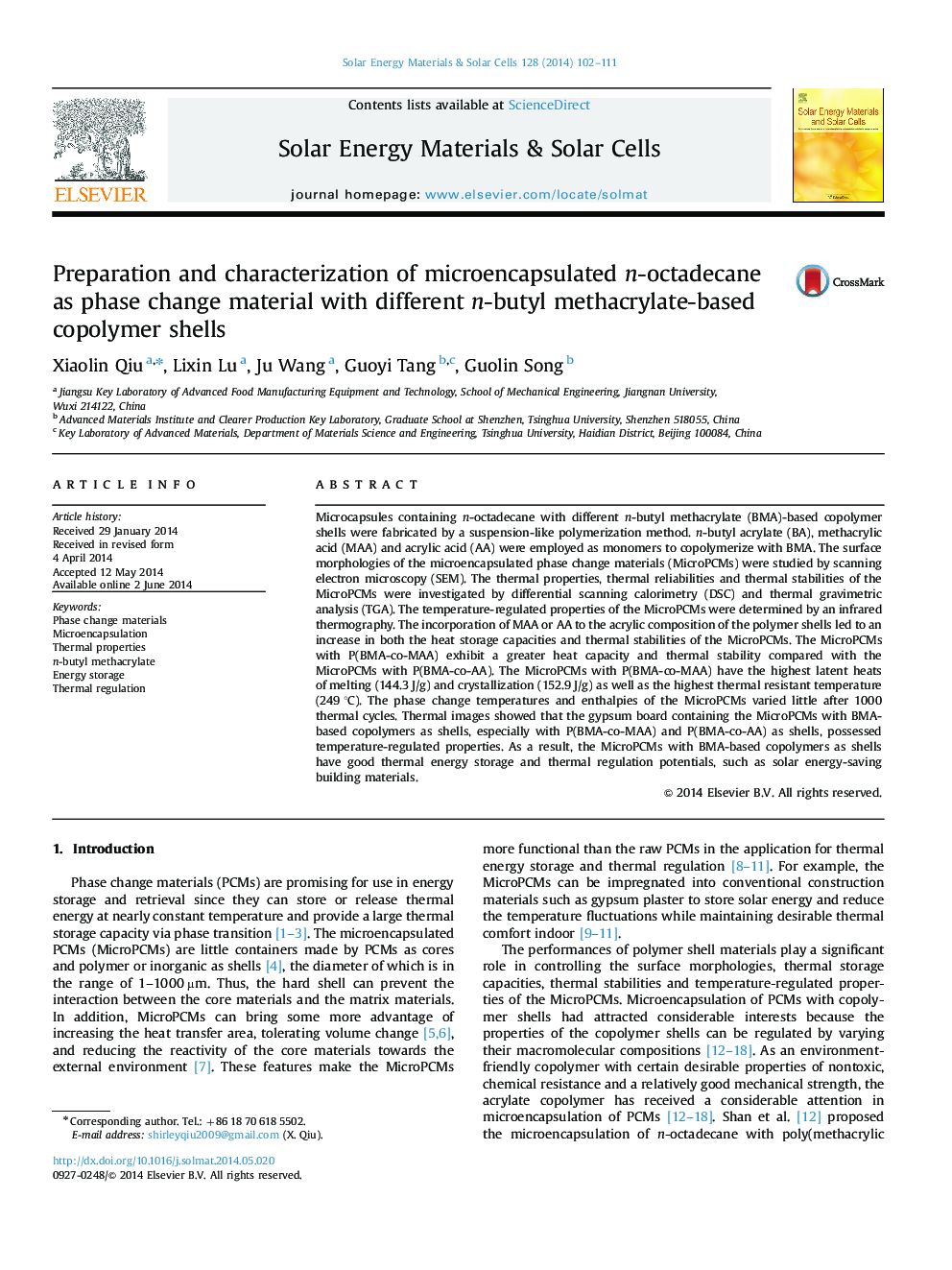| کد مقاله | کد نشریه | سال انتشار | مقاله انگلیسی | نسخه تمام متن |
|---|---|---|---|---|
| 77974 | 49312 | 2014 | 10 صفحه PDF | دانلود رایگان |

• n-octadecane was encapsulated with n-butyl methacrylate (BMA)-based copolymer shells.
• Microcapsule with P(BMA-co-methacrylic acid) has the highest latent heat.
• Microcapsule with P(BMA-co- methacrylic acid) has the greatest thermal stability.
• Phase change enthalpies of the microcapsules varied little after thermal cycles.
• Gypsum board with microcapsules possesses temperature-regulated property.
Microcapsules containing n-octadecane with different n-butyl methacrylate (BMA)-based copolymer shells were fabricated by a suspension-like polymerization method. n-butyl acrylate (BA), methacrylic acid (MAA) and acrylic acid (AA) were employed as monomers to copolymerize with BMA. The surface morphologies of the microencapsulated phase change materials (MicroPCMs) were studied by scanning electron microscopy (SEM). The thermal properties, thermal reliabilities and thermal stabilities of the MicroPCMs were investigated by differential scanning calorimetry (DSC) and thermal gravimetric analysis (TGA). The temperature-regulated properties of the MicroPCMs were determined by an infrared thermography. The incorporation of MAA or AA to the acrylic composition of the polymer shells led to an increase in both the heat storage capacities and thermal stabilities of the MicroPCMs. The MicroPCMs with P(BMA-co-MAA) exhibit a greater heat capacity and thermal stability compared with the MicroPCMs with P(BMA-co-AA). The MicroPCMs with P(BMA-co-MAA) have the highest latent heats of melting (144.3 J/g) and crystallization (152.9 J/g) as well as the highest thermal resistant temperature (249 °C). The phase change temperatures and enthalpies of the MicroPCMs varied little after 1000 thermal cycles. Thermal images showed that the gypsum board containing the MicroPCMs with BMA-based copolymers as shells, especially with P(BMA-co-MAA) and P(BMA-co-AA) as shells, possessed temperature-regulated properties. As a result, the MicroPCMs with BMA-based copolymers as shells have good thermal energy storage and thermal regulation potentials, such as solar energy-saving building materials.
Journal: Solar Energy Materials and Solar Cells - Volume 128, September 2014, Pages 102–111